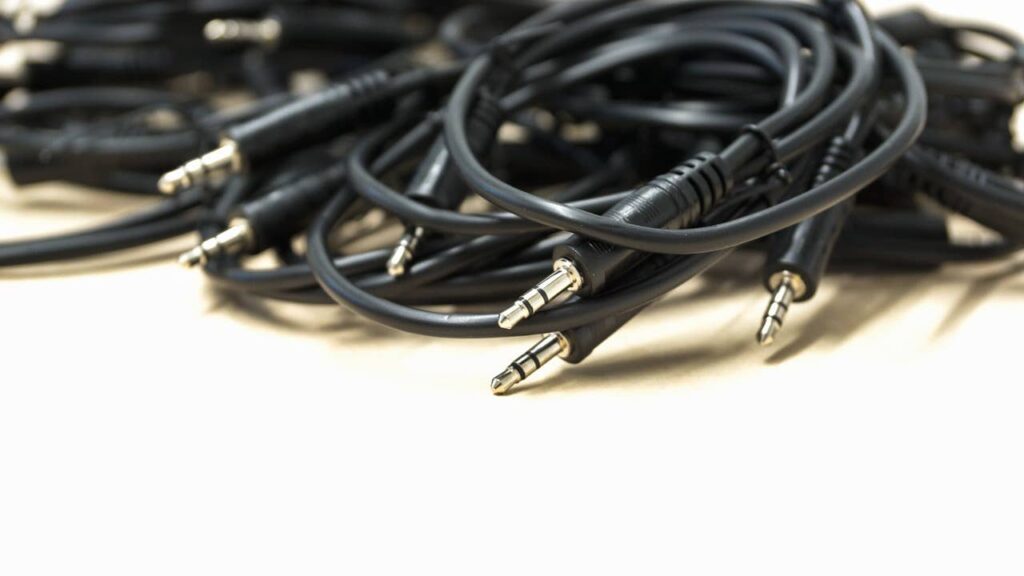In the age of wireless connectivity and Bluetooth-enabled devices, the humble aux cord may seem like a relic of the past. However, this simple yet versatile audio cable continues to hold its own in the realm of audio connectivity, offering a reliable and high-quality solution for linking various devices together. Whether you’re a music aficionado, a podcast enthusiast, or simply someone who wants to connect their smartphone to their car stereo, the aux cord remains an indispensable tool. In this comprehensive guide, we’ll explore what exactly an aux cord is, how it works, and the myriad ways in which you can use it to enhance your audio experience.
What is an Aux Cord?
An aux cord, short for auxiliary cord, is a type of audio cable used to connect electronic devices together for the purpose of transmitting audio signals. The most common type of aux cord features a 3.5mm (1/8 inch) stereo jack on each end, allowing it to be plugged into the headphone jack or auxiliary input of various devices such as smartphones, tablets, laptops, MP3 players, car stereos, and home audio systems.
How Does an Aux Cord Work?
At its core, an aux cord is a simple analog cable that transmits electrical signals between compatible devices. When you plug one end of the aux cord into the headphone jack of your smartphone, for example, and the other end into the auxiliary input of your car stereo, you’re essentially creating a direct electrical connection between the two devices. This allows the audio signal from your smartphone to be played through the speakers of your car stereo, providing a convenient and reliable way to listen to your favorite tunes while on the go.
Using an Aux Cord: Step-by-Step Guide
Identify the Audio Output and Input Ports: Before you can use an aux cord, you’ll need to identify the audio output and input ports on your devices. The audio output port is typically labeled as a headphone jack and is found on devices such as smartphones, tablets, and laptops. The auxiliary input port, on the other hand, may be labeled as “AUX IN” or simply “AUX” and is commonly found on car stereos and home audio systems.
Plug in the Aux Cord: Once you’ve located the appropriate ports, simply plug one end of the aux cord into the audio output port of your source device and the other end into the auxiliary input port of your receiving device. Make sure the connections are secure to ensure optimal audio transmission.
Select the Correct Input Source: If you’re connecting your smartphone to your car stereo or home audio system using an aux cord, you’ll need to select the correct input source on the receiving device. This is typically done using the device’s menu or settings options. Once you’ve selected the auxiliary input source, you should hear the audio from your source device playing through the speakers of your receiving device.
Adjust the Volume: Finally, adjust the volume levels on both your source device and receiving device to achieve the desired listening level. It’s important to strike a balance between the two to avoid distortion or overly loud audio.
Advantages of Using an Aux Cord
While wireless technologies like Bluetooth have gained popularity in recent years, aux cords still offer several advantages that make them a preferred choice for many audio enthusiasts:
Universal Compatibility: Aux cords are compatible with a wide range of devices, including older devices that may not support Bluetooth connectivity. This universality makes aux cords a convenient option for connecting various devices together.
High-Quality Audio Transmission: Unlike some wireless audio transmission methods, which may compress audio signals and result in reduced sound quality, aux cords transmit audio signals in their original analog form, ensuring high-fidelity sound reproduction.
Reliable Connection: Aux cords provide a direct physical connection between devices, eliminating the potential for interference or signal dropout that can occur with wireless connections. This makes aux cords particularly well-suited for situations where a stable and uninterrupted connection is crucial.
Low Cost: Aux cords are generally inexpensive and widely available, making them an affordable option for consumers who may not want to invest in more expensive wireless audio solutions.
Creative Uses for Aux Cords
While the primary purpose of an aux cord is to transmit audio signals between devices, there are several creative ways you can use aux cords to enhance your audio experience:
DJ Mixing: If you’re a budding DJ or music enthusiast, you can use aux cords to connect multiple audio sources, such as turntables, CD players, and mixers, to create custom mixes and playlists.
Recording: Aux cords can also be used to connect microphones and other audio input devices to recording equipment, allowing you to capture high-quality audio for podcasts, music production, and other creative projects.
Gaming: Gamers can use aux cords to connect their gaming consoles or PCs to external speakers or headphones for an immersive audio experience. This is especially useful for multiplayer gaming sessions where clear and precise audio communication is essential.
Home Theater Setup: If you’re setting up a home theater system, aux cords can be used to connect various audio components, such as Blu-ray players, soundbars, and subwoofers, to create a surround sound setup that rivals the movie theater experience.
Conclusion
The aux cord may be a simple audio cable, but its versatility and reliability make it an indispensable tool for audio enthusiasts and casual users alike. Whether you’re connecting your smartphone to your car stereo, recording music in your home studio, or setting up a home theater system, the aux cord provides a convenient and high-quality solution for transmitting audio signals between devices. So the next time you need to connect two audio devices together, don’t underestimate the power of the humble aux cord.







